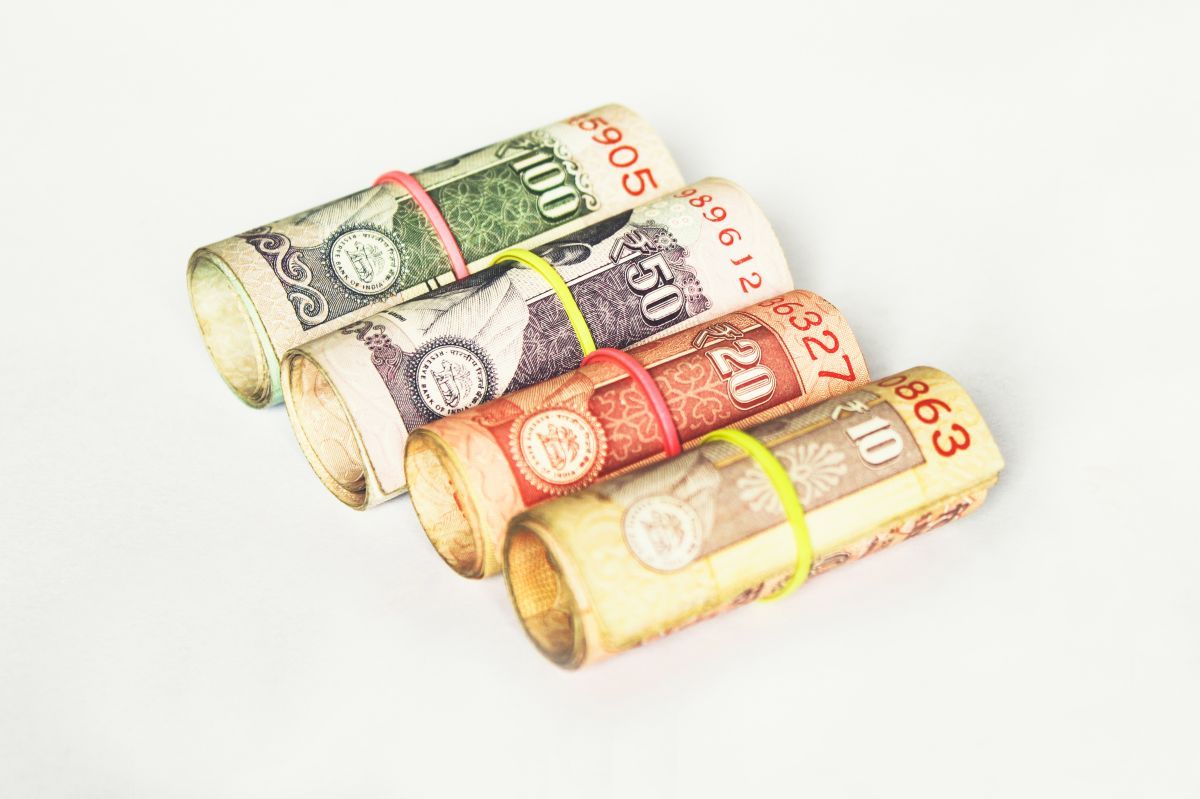- What is the difference between petrol engine and diesel engine?
- Could you enlist at least one utility of a spark plug, of course, other than its use in petrol engines?
- How will you define the calorific value of a fuel?
- What is the meaning of auto-ignition temperature?
- Could you explain why LMTD is introduced in a Heat Exchanger?
- What are the heats called, whose sum amounts to the heat required to convert 1 kg of water into 1 kg of steam?
- What's generally the velocity of superheated and saturated steam?
- Where could superheated steam be used?
- Is it possible, at least in isenthalpic processes, that the Wet Bulb Temperature (WBT) is independent of the relative humidity?
- Are air compressors efficient? How does the efficiency of air compressors relate to the electrical input provided?
- If you suck some cranberry juice in a glass using a straw, the juice would always rise inside the straw. What established principle do you think would get violated if it doesn't? What is the principle?
- What do you mean by Energy Conservation and Energy Management? Explain briefly.
- What is cavitation in pumps?
- What is NPSH in pumps?
- What are the main constituent(s) of stainless steel and alloy steel?
- Which furnace is used for heating metals?
- How will you define the Coefficient of Performance?
- What does the thickness of insulation usually depend on? What objective is the economic thickness of insulation founded on?
- How are pipe diameters and pressure drop related?
- How can trees suck the water through the xylem tubes so high, to several meters, if 10 meters is the maximum attainable height for an incompressible liquid to rise a capillary-like tube under standard pressure conditions?
- How do you calculate the volume flow rate of a liquid flowing through a pipe?
- What are orthotropic materials?
- Explain the effect of alloying chromium and nickel in stainless steel?
- What is the curie point?
- Why is the specific strength of materials very high when they are fibrous but lower when they are in bar form?
- Define buckling factor?
- What do you understand by catenary cable?
- What is a pyranometer used for?
- Important HR Questions & Answers
- What do you think are the skills an engineer must possess?
- What do you think customers look for in a product?
- Why do you think working as a team is essential?
- Tips for mechanical engineering interview
Mechanical Engineering has unequivocally been the most sought-after career path in recent years. Top companies in the engineering milieu are forever sniffing around for a vibrant personality to cater to a myriad of requirements.
Considering the competition around, you can’t deny the fact that an engineering degree today doesn’t guarantee you a white-collar job in some esteemed company.
In any run-of-the-mill interview, you will be judged based on your character and intellect, your skills and experience and also the way you choose to “market” yourself.
One point which could make you stand apart is the “Technical Questions” round. As an engineering graduate, you will undoubtedly be confronting some standard technical questions, and this blog will correctly help you with the same.
Here is a list of some common questions that happen to pop in such interviews
1. What is the difference between petrol engine and diesel engine?
The Diesel Engine is an IC Engine in which the ignition of the fuel is caused by the elevated temperature of the air which gets mechanically compressed in the cylinder. Petrol Engines, however, employ a spark plug for the ignition.
2. Could you enlist at least one utility of a spark plug, of course, other than its use in petrol engines?
Yes, spark plugs can be employed to measure ionization in the cylinders, particularly in Saab Direct Ignition when they are not firing.
This ionic current measurement is used to replace the ordinary cam phase sensor, knock sensor and misfire measurement function.
3. How will you define the calorific value of a fuel?
The calorific value of a fuel is the quantity of heat produced by its combustion – at constant pressure and under “normal” (standard) conditions (i.e. to 0°C and under a pressure of 1,013 mbar).
4. What is the meaning of auto-ignition temperature?
The Auto-ignition Temperature of a substance is the lowest temperature at which it spontaneously ignites in a standard atmosphere without an external source of ignition, such as a flame or spark.
5. Could you explain why LMTD is introduced in a heat exchanger?
LMTD stands for Logarithmic Mean Temperature Difference and is formulated as,
LMTD = {(∆T - ∆t) / ln(∆T/∆t)}, where ∆T and ∆t amount to the temperature difference between the fluids at both the ends of the Heat Exchanger.
The temperature change that takes place across the Heat Exchanger is not linear - it is exponential. LMTD is also a parameter used to determine the heat transfer rate through the Heat Exchanger. As the LMTD increases, the heat transfer speeds up.
6. What are the heats called, whose sum amounts to the heat required to convert 1 kg of water into 1 kg of steam?
Sensible Heat & Latent Heat
7. What's generally the velocity of superheated and saturated steam?
The velocity of superheated steam is around 70 m/s, while that of saturated steam is approximately 50 m/s.
8. Where could superheated steam be used?
Superheated steam was widely used in steam engines. It can also be used in drying and cleaning, in layering, reaction engineering, epoxy drying, and film use. '
Superheated steam can also be used in pest control. It has wide utilisations in energy systems and nanotechnology as well.
9. Is it possible, at least in isenthalpic processes, that the Wet Bulb Temperature (WBT) is independent of the relative humidity?
Yes, it is quite possible in ideal cases when, as you said, the process is isenthalpic.
Wet Bulb Temperature (WBT) is the temperature of a parcel of air when it's completely saturated with moisture when the parcel is enthalpically forced to absorb moisture.
The water in contact with the air needs to be evaporated to expedite the absorption phenomenon. Surrounding air provides heat for evaporation, and the resulting vapor gets added back to the air, energy conserved as a result Still the overall temperature, known as the familiar Dry Bulb Temperature (DBT) drops a little.
If this process persists until the air becomes completely saturated, the DBT reaches a minimum value that is called the WBT.
As can be seen in such ideal processes that happen to be isenthalpic, the relative humidity (moisture content in air) goes on increasing at a constant known value of the WBT, corresponding to the DBT when the air would eventually be saturated with moisture.
10. Are air compressors efficient? How does the efficiency of air compressors relate to the electrical input provided?
Air compressors are highly inefficient because only about 10% of the electrical input gets converted into an output - the remaining 90% amounts to sheer waste.
11. If you suck some cranberry juice in a glass using a straw, the juice would always rise inside the straw. What established principle do you think would get violated if it doesn't? What is the principle?
Pascal's Law will be violated if the juice doesn't rise when sucked. The Pascal's Law states that a pressure change at any point in a confined incompressible fluid is transmitted throughout the fluid such that the same change occurs everywhere.
12. What do you mean by energy conservation and energy management? Explain briefly.
Energy Management employs the use of modern technology that would allow for minimum energy expenditure to perform the same quantity and quality of work.
Energy Conservation, however, focuses on exuding such moral dispositions that would hinder an unnecessary wastage of energy. It begins with switching off the lights in your room when you are leaving.
Energy Management is usually curative while Energy Conservation is very much proactive.
13. What is cavitation in pumps?
Cavitation is the formation of bubbles, or cavities, in a liquid, developed in areas of relatively low pressure around an impeller.
The implosion or collapse of these bubbles triggers intense shockwaves inside the pump, resulting in significant damage to the impeller as well as the pump housing.
14. What is NPSH in pumps?
NPSH stands for Net Positive Suction Head.
The margin of pressure over vapour pressure at the pump suction nozzle is defined to be the NPSH.
It is the difference between stagnation suction pressure at the pump inlet, with the pump running, and the vapour pressure of the pumpage at the inlet temperature.
15. What are the main constituent(s) of stainless steel and alloy steel?
The main constituent of stainless steel is iron. The main alloy ingredient is chromium. Stainless steel, by definition, must contain at least 10.5% chromium.
Alloy steel is made by combining carbon steel with one or several alloying elements, such as manganese, silicon, nickel, titanium, copper, chromium, and aluminum.
16. Which furnace is used for heating metals?
Induction Furnace (Electrical) is used for heating metals.
17. How will you define the coefficient of performance?
Coefficient of Performance (COP) is defined as the efficiency ratio of the amount of heating or cooling provided by a heating or cooling unit to the energy consumed by the system.
The higher the COP of the system, the higher is its efficiency.
18. What does the thickness of insulation usually depend on? What objective is the economic thickness of insulation founded on?
The thickness of insulation usually depends on the characteristics of the insulating material and the purpose of the equipment.
The economic thickness of insulation is founded on the objective of bearing a minimum, rather an optimum, total cost.
19. How are pipe diameters and pressure drop related?
The pipe diameters and pressure loss are inversely related.
20. How can trees suck the water through the xylem tubes so high, to several meters, if 10 meters is the maximum attainable height for an incompressible liquid to rise a capillary-like tube under standard pressure conditions?
Why doesn't the water boil as it reaches the top, owing to the vacuum that would form at the top of the tube?
Trees suck water high up by creating negative pressures, owing to transpiration. The pressure difference is enough for the water to reach high up through the xylem tubes.
Moreover, the water doesn't boil because the xylem tubes are devoid of any activating agent (say, an air bubble) that would provide the necessary latent energy for the phase conversion to occur.
Xylem tubes in trees, unlike our run-of-the-mill straws, must never contain any air bubble - They are only filled with water right from the start!
21. How do you calculate the volume flow rate of a liquid flowing through a pipe?
The volume flow rate of a liquid flowing through a pipe is the product of the cross-section area of the pipe and the speed of flow. Q = A.v
22. What are orthotropic materials?
They are a particular class of anisotropic materials which can be described by mentioning their properties in three perpendicular directions.
Wood and composites are orthotropic materials.
23. Explain the effect of alloying chromium and nickel in stainless steel?
The addition of nickel and chromium increases the tensile strength and increases in resistance to corrosion are assured.
24. What is the curie point?
Curie point is the temperature at which outside forces can no longer magnetize ferromagnetic materials.
25. Why is the specific strength of materials very high when they are fibrous but lower when they are in bar form?
A crystal structure has an ordered, repeating arrangement of atoms. Fibers are liable to maintain this and thus have high specific strength.
As the size increases, the condition of ordered and repeating arrangements can’t be guaranteed because of several types of defects and dislocations, and thus the specific strength lowers down.
26. Define buckling factor?
Buckling Factor is defined as the ratio of the equivalent length of the column to the minimum radius of gyration.
27. What do you understand by catenary cable?
A cable that is attached to the support and carries its weight is referred to as the catenary cable.
28. What is a pyranometer used for?
A Pyranometer is a type of Acidometer used for measuring solar irradiance on a planar surface and it is designed to measure solar radiation flux (in Watts per square meter) density from the hemisphere above within a wavelength range of 0.3 to 3 micrometers.
Important HR Questions & Answers
1) What do you think are the skills an engineer must possess?
An engineer needs to be highly innovative and. He/she must be quick to adapt, which is very important. Adaptability drives a humble attitude which helps in admitting to one’s mistakes and expedites a constant learning process.
Exhibiting excellent communication skills counts a good deal because an Engineer is expected to work efficiently as a team player and market his ideas.
Quite unsurprisingly, it has always been eloquently presented proposal that has sealed the deal!
Also Read: How To Answer "Why Should I Hire You"?
2) What do you think customers look for in a product?
Comfort. I suppose it’s always a comfort. The customers have the right to expect that the underlying technology is worth the money they spend in the process.
Of course, what matters next is the affordability quotient, but here, you do have a few market parameters to consider as well!
3) Why do you think working as a team is essential?
Well, interdependence is way more important than independence, they say. The competition expects you to be at your best while working in a team and pondering over each other's ideas ultimately helps in improving the quality of the outcome.
Moreover, it’s always a learning curve when you have other people’s intellect weighing in!
Tips for mechanical engineering interview
1.Technical Knowledge
No matter how you score on other grounds, you will ultimately be qualified on the fact that you hold a sound knowledge of your subject. Make sure that you are well prepared on this front – This is what differentiates between success and failure!
2. “Market” yourself professionally
A good deal of onus is on how you go on portraying your skills and experience. Make sure that you dress well – Formally. Be aware of the basic etiquettes, which reflects a lot on your intent and purpose. It lends an impression about how serious you would be if endowed with a possible opportunity!
3) Be On-Time
It’s the last thing you would want! Try to be as early for the occasion as possible. Do, elucidate, if possible and required, how stern you have always been as far as time management is concerned!
4) Sound Creative
Avoid sticking to clichés. Try to be creative, yet realistic, in your approach. How you propose to solve a technical glitch leaves a lasting impression on the decision-makers!
5) Exude confidence in your demeanor
Whatever you say must eventually make sense, which is where your confidence level gets highlighted automatically. Use a polite tone and show that you are very much eager to learn!







